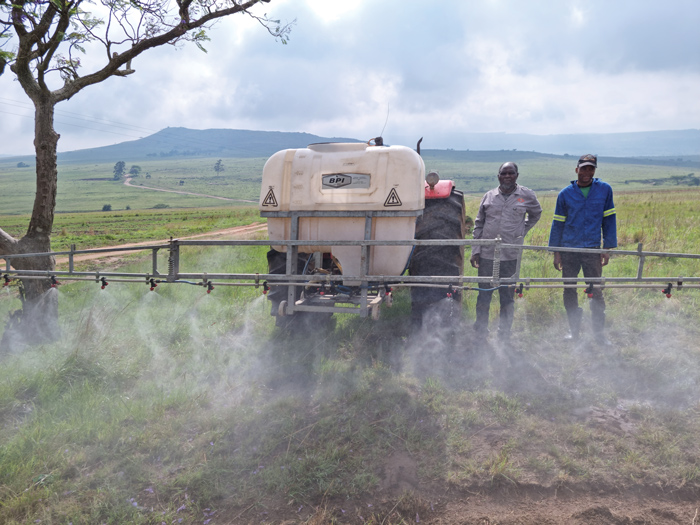Calibrate your boom sprayer
March 2022
To ensure maximum accuracy from a sprayer you have to calibrate it before the spraying season begins, and recalibrate it frequently throughout the spraying season.
The process of sprayer calibration is designed to ensure that you are spraying the correct amount of liquid (water and poison) onto the desired area.
The tools required for calibration are:
- a timer;
- measuring jug (marked in ml); and
- a tape measure.
THINGS TO REMEMBER
- A nozzle with a smaller hole will deliver less liquid than one with a larger hole. The nozzle may have a wider or narrower spray pattern.
- As you pump harder, the pressure is increased and more liquid is released. The higher the pressure, the smaller the droplets.
- When spraying with a tractor, the pressure of the pump is affected by the revolutions/min (rpm).
- The gears of the tractor affect the speed of the tractor.
- The operator of the tractor needs to decide on the rpm as well as the gear that will be used and keep this constant once the calibrations have been done.
- Change the amount of poison in the mixture. More poison means that more active ingredient is being applied with the same amount of water.
CALIBRATION METHOD
- Fill the tank of the sprayer.
- Decide which gear will be used and at which rpm (e.g. 4th gear at 2 500 rpm).
- Measure a distance of 100 m.
- Using that gear and the correct rpm, measure the time that it takes for the tractor to cover the 100 m – for example 21 seconds.
- Run the tractor in a stationary position, at the agreed 2 500 rpm, and check the spray cover that you are achieving on the ground.
- Set the pressure on the sprayer to give the desired effect (e.g. 3 bar).
- Using the same time that it took the tractor to cover the 100 m, engage the spray, and measure the amount of water produced by one nozzle, for example 1 200 ml/1,2 litres.
- Repeat this process with two or three nozzles and take the average reading.
- Use the amount of liquid produced by one nozzle (for example 1 200 ml/1,2 litres) and multiply this with the number of nozzles (for example twelve nozzles) so that you know how many litres you are spraying out over 100 m.
- With all the nozzles: 12 x 1,2 litres = 14,4 litres.
- Measure the width of the boom (for example 4,7 m). Now you know the width that you are spraying, and you know the amount of water you are spraying over that width over the 100 m. The area covered by the sprayer over the 100 m: 100 m x 4,7 m = 470 m2.
On this area 14,4 litres of water was used. An area of 1 ha is equal to 10 000 m2 (100 m x 100 m). The volume to be used on 1 ha will be 10 000/470 = 21,27 x 14,4 litres = 306 litres/ha.
The label on the chemical container will indicate the amount of water required per hectare as well as the number of litres of poison required per hectare.
If you discover that the amount of liquid being sprayed is not within the norm, repeat the calculation adjusting the pressure of the sprayer or the gear of the tractor or the nozzle size. Once the amount of water is correct, you need to calculate the number of litres of poison that should be added to each spray tank.

Publication: March 2022
Section: Pula/Imvula
Author: GRAIN SA TRAINING MANUAL
